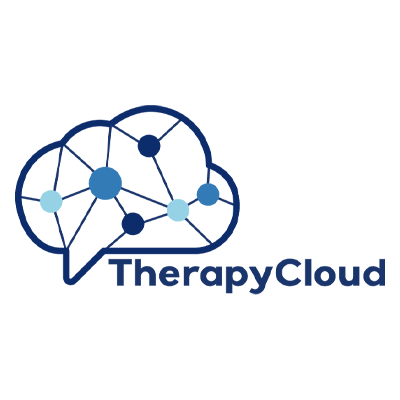Blogging for Therapists: A Modern Approach to Growing Your Practice

The digital age has transformed how people seek out mental health care. Today, most potential clients begin their search online, looking for information, reassurance, and professionals they can trust. That means visibility and credibility have become essential.
For therapists, one of the most effective ways to achieve both is through blogging.
Blogging is simply the practice of publishing written content online, usually in the form of articles that answer questions, share insights, or provide helpful resources. This might mean writing about common mental health challenges, offering management techniques, or breaking down complex ideas in a way that feels approachable.
Why Blogging Is a Game-Changer for Therapists
Blogging may not feel like the first thing on a therapist’s to-do list, but it’s one of the most impactful tools available for growing a practice.
Establish yourself as an expert in your field
Even if you have years of education, training, and practice, new clients may not fully understand the depth of your expertise. Blogging gives you the chance to highlight what you know in a practical, relatable way. For example, writing about ways to navigate grief shows readers that you not only understand the clinical side but can also translate that knowledge into useful guidance. Over time, this positions you as a trusted authority in your area of specialization. When potential clients see your consistency and knowledge, they’re more likely to view you as the professional they want to work with.
Boost visibility through SEO
SEO, or Search Engine Optimization, is what makes your content show up on Google when people search for terms like “coping strategies for anxiety” or “how to deal with burnout.” When you include relevant keywords in your posts, search engines are more likely to show your content to people looking for those resources.
Google also rewards fresh, valuable, and well-structured content. Think of every blog as a digital footprint. The more you write, the larger your footprint becomes. Regularly publishing helpful blogs signals to search engines that you’re active and credible, which can boost your ranking over time.
Create resources that live beyond the therapy room
Unlike one-on-one sessions, which are limited by time and place, therapist blogs become lasting resources that anyone can access any time they are in need. Once you write an article, it continues to work for you, attracting and helping readers and showcasing your expertise for months or even years. You can also repurpose blogs into different formats, such as social media posts, email newsletters, or downloadable guides. Each post becomes part of a growing library of resources that expands your professional footprint. The more you create, the more visible and influential your voice becomes.
The Risks of Blogging (And How to Manage Them)
Like anything in the digital space, blogging for therapists does come with risks. But those risks can be managed with some awareness and a thoughtful approach.
Confidentiality Concerns
The last thing you want is to accidentally share something that could identify a client. Even with the best intentions, personal anecdotes can get tricky. The rule of thumb: keep examples general, focus on patterns or strategies, and never include identifying details.
Misinformation or Overgeneralization
It’s easy to forget that readers may take a blog post as universal advice. That’s why disclaimers are key. Make it clear that your blog is for informational purposes only, not a substitute for therapy. And when possible, frame advice as “here are some strategies that can help” instead of “this will solve your problem.” If you are curious about more risk management strategies for this challenge, contact your professional liability insurance company and ask for their advice.
Time Commitment
Writing thoughtful blogs takes time. And time may be something you don’t feel you have a lot of. This is where scheduling time to invest in your digital footprint and your use of time-saving resources, like Artificial Intelligence (AI), comes in. Let’s be honest: you are not going to blog if you don’t schedule time to blog. However, given that blogging is a highly effective tool for creating a solid online presence for clients and other professionals to find you, carving out time to blog will be more valuable to you than any in-person networking event or Facebook ad will ever be. Don’t forget to also take advantage of our digital age by exponentially reducing the time it takes to write a blog by using tools like ChatGPT. AI consolidates clinical information available from the Internet on a topic, allowing you to simply edit the content to fit your style and add your own personal flair. What may have taken several hours years ago can now take only minutes!
Tips to Make Blogging Work for You
- Write for your ideal client. Picture the person you most want to reach. What questions are they typing into Google late at night? Write posts that answer those.
- Use keywords naturally. Don’t stuff your blog with repeated phrases. Instead, sprinkle in terms that reflect how people search.
- Stay consistent. One blog post is good; a series of posts is better. Regular posting builds momentum and keeps you showing up in search results.
- Be yourself. Your voice is your brand. Don’t worry about sounding overly academic unless that’s what you want to project. Clients connect to authenticity more than perfection.
- Link your content. If you write about mindfulness, link it to another blog you’ve written on stress reduction. Internal linking keeps readers engaged longer.
Publish Your First Blog Post Today!
At the end of the day, blogging isn’t just about marketing. It’s also about connection. It’s a way to extend your reach beyond the therapy room and share your voice with people who may not be ready (or able) to book a session yet but still need guidance.
TherapyCloud’s Blog Management feature gives you the tools to make that connection easier, more professional, and more impactful. Instead of juggling multiple platforms or complicated publishing software, we bring everything together in one seamless space.
With this tool, therapists can create a professional author bio that highlights their expertise, background, and areas of focus, giving readers a clear sense of who they are and linking to their professional profile, where a new client can directly contact them. The built-in editor makes it simple to write and publish blogs, while all your posts are stored in one dashboard so you can easily track and manage your content over time.
So if you’ve ever thought of publishing your therapist blog but don’t know where to start, our platform is just the right place for you.
Create your free therapist profile today and make your expertise visible to the people searching for it.




